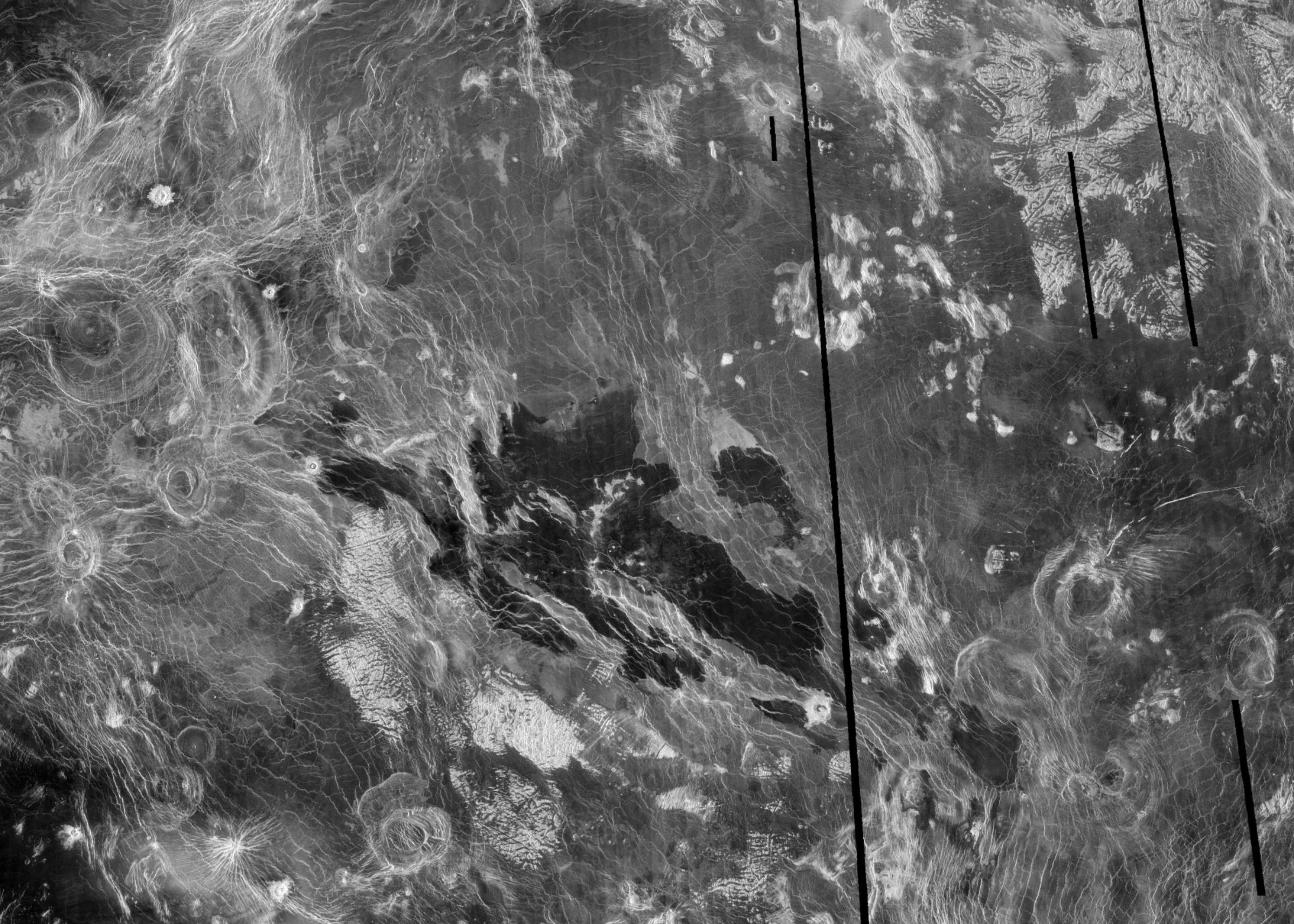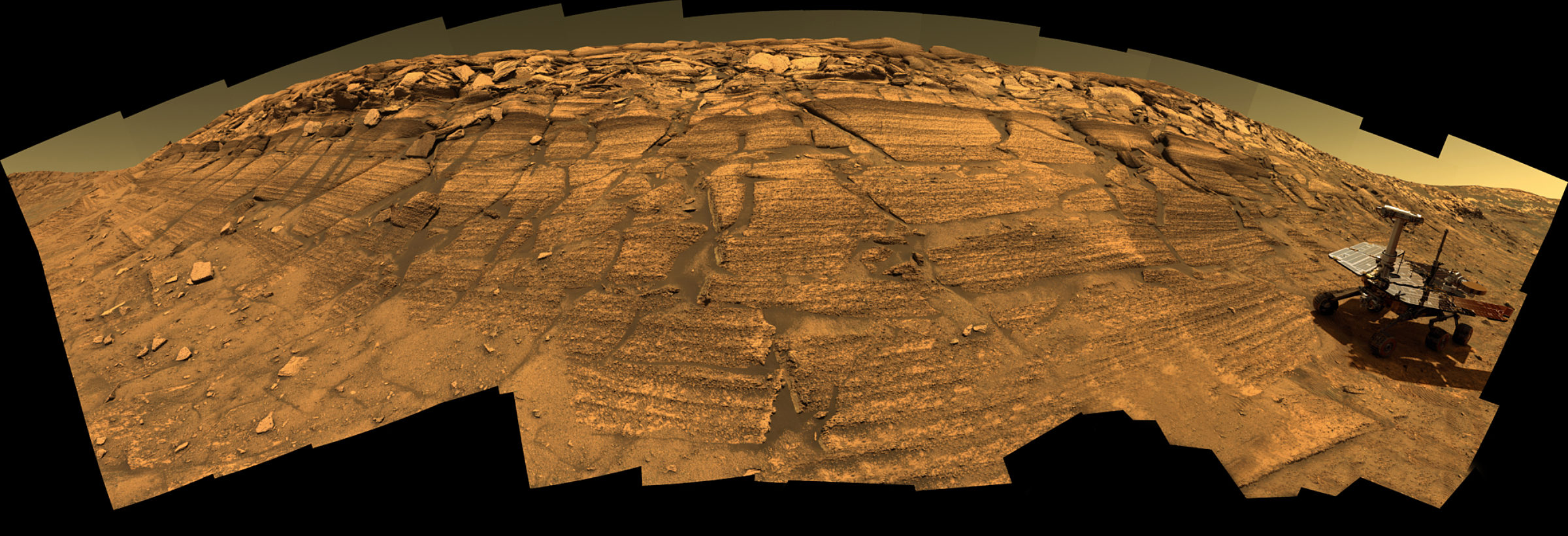Emily Lakdawalla • Jan 11, 2012
Steno's principles and planetary geology
Today's Google Doodle celebrates Nicholas Steno (on the occasion of his 374th birthday). By Googling Steno you'll learn that he's one of the founding fathers of modern geology. He developed a set of rules that guide geologists in reading rocks to tell the story of how a place came to be. These rules are kind of like Newton's Laws for geology -- despite the fact that three centuries have elapsed since he first devised them, they are still powerful tools for understanding the physical history of a place, and they are taught as fundamentals to all beginning students of geology.
Here are those rules. Since most other bloggers are quoting Steno I'll be different and explain how the laws are currently used in geology, as explained in my dog-eared copy of the fourth edition of Press and Seiver's textbook Earth, which was the basis of my introductory geology class at Amherst College. The book asks us to imagine the Grand Canyon, and states: "The first thing we notice...is a pronounced horizontal layering, or stratification. This bedding, as it is most frequently called, is what we might expect from the settling of particles from air or water to form layers of sediment (from the Latin sedimentum, settled). This expectation is supported by experience, for we can see horizontal layers of sand being deposited on beaches or sandbars and layers of mud and silt accumulating on floodplains of rivers." This corresponds to Steno's principle of original horizontality.
Press and Siever go on: "Once we make this generalization (which has held up for the 300 years since it was first enunciated), we can go on to the obvious next thought. Since it is absurd to think that a sedimentary layer can be deposited beneath a previously deposited bed, we conclude that any new layer added to a series must always be on top. Naturally we have to add the proviso that the whole series has not been deformed and completely overturned at some later time. The time sequence of stratification is the simple basis for the stratigraphic time scale, a clock we can use to measure time and date events." This corresponds to Steno's law of superposition.
Press and Siever finish their summary: "[Steno] also stated the principle of original continuity, which holds that a sedimentary layer forms at the time of its deposition a continuous sheet that ends only by thinning to disappearance, by gradually changing to a bed of different composition, or by abutting against a wall or barrier such as a shoreline that confines the depositional area. From the law of continuity we intuitively grasp the idea that the face of a bed, as we see it in the excavation for a highway cut or in the walls of the Grand Canyon, is the broken or eroded edge of a once-continuous sheet."
Just like with Newton's laws for physics or Kepler's laws of planetary motion, nothing in the real world is ever quite as simple as Steno's three principles imply. They're still very powerful. Planetary scientist Ryan Anderson took a field trip to the Grand Canyon a couple of years ago, and explained in a blog post how a geologist can read its superposed layers of different rock types to tell its story. The combination of stunning landscapes and the creative process of reading them to tell stories is one of the things that attracted me to geology in the first place.
Steno's laws are also used to read geologic histories on planetary bodies. Here's a large area of Venus, from which geologists have read a convoluted geologic history.

Here's the story as I read it: the oldest material in the image is the bright, heavily fractured stuff in upper right; later, darker lava flowed into its canyon-like valleys. After the widespread dark lava flows solidified, the whole area experienced tectonic deformation, in the form of coronae (the spider-like features at far left) or wrinkle ridges (the wrinkly slightly brighter network of lines criscrossing all the darker lava plains.). Very late in this story, a much darker lava flow erupted (in the middle of the image). On first glance, it looks like the wrinkle ridging happened after the very darkest lava flow formed, but if you look very closely you'll see that the dark lava happened later; in places it flows around topographic highs, ridges, along the wrinkle ridges.
Of course, like I said, in the real world, things are usually much more complicated. This isn't the only way that the story of Bereghinia Planitia can be told. Also, in my own research, I found substantial evidence that the formation of tectonic ridges on Venus wasn't just a one-time thing; it looked like ridges that formed before they were embayed by lava flows continued to deform even after the lava flowed around them. There are two hazards to employing Steno's laws in the way I have done here.
First, Steno's laws work pretty well for sedimentary rocks (rocks that formed by the deposition of horizontal layers of sediment in water) but they break down for igneous rocks, rocks that solidify from melted rock. Igneous rocks behave very differently from sedimentary rocks. For example, they can form horizontal layers when magma squirts between preexisting sedimentary rocks, which messes up the law of superposition. And it's dangerous to mix stratigraphy with tectonics, as I've done here, because tectonic events don't have lateral continuity like sedimentary rocks do, and they can happen at the same time as sedimentation.
Second, Steno's laws work best when you can read the history from a cut through a continuous stack of layers, like in the Grand Canyon. When I took my intro geology class, I was in Massachusetts, which has no nice canyons, and where most of the geology is covered by dirt and vegetation. Therefore, most of our field trips were taken to road cuts lining highways! In planetary geology, nearly all of the information we have just covers the topmost surface; we don't get the vertical perspective on a cut through the rock layers. We have to make assumptions about what's happening with the rocks beneath the surface, where we can't see them. And those assumptions often turn out to be wrong.
That's one reason the rover missions on Mars are so important, because they really can wander around to examine vertical slices through sequences of sedimentary rocks.

The ability to crawl upward through a layered stratigraphic sequence of rocks is probably the most compelling thing about Gale crater as a landing site for the next Mars rover, Curiosity. Here's an example of how one scientific team has interpreted bird's-eye view photos of Gale's layered central mound. Once Curiosity lands in August, it will begin at the bottom, in the oldest rocks of the sequence, and climb up through younger and younger strata, reading the rock record all the way, employing principles of geology first articulated by Steno more than 300 years ago.
Support our core enterprises
Your support powers our mission to explore worlds, find life, and defend Earth. You make all the difference when you make a gift. Give today!
Donate

 Explore Worlds
Explore Worlds Find Life
Find Life Defend Earth
Defend Earth



